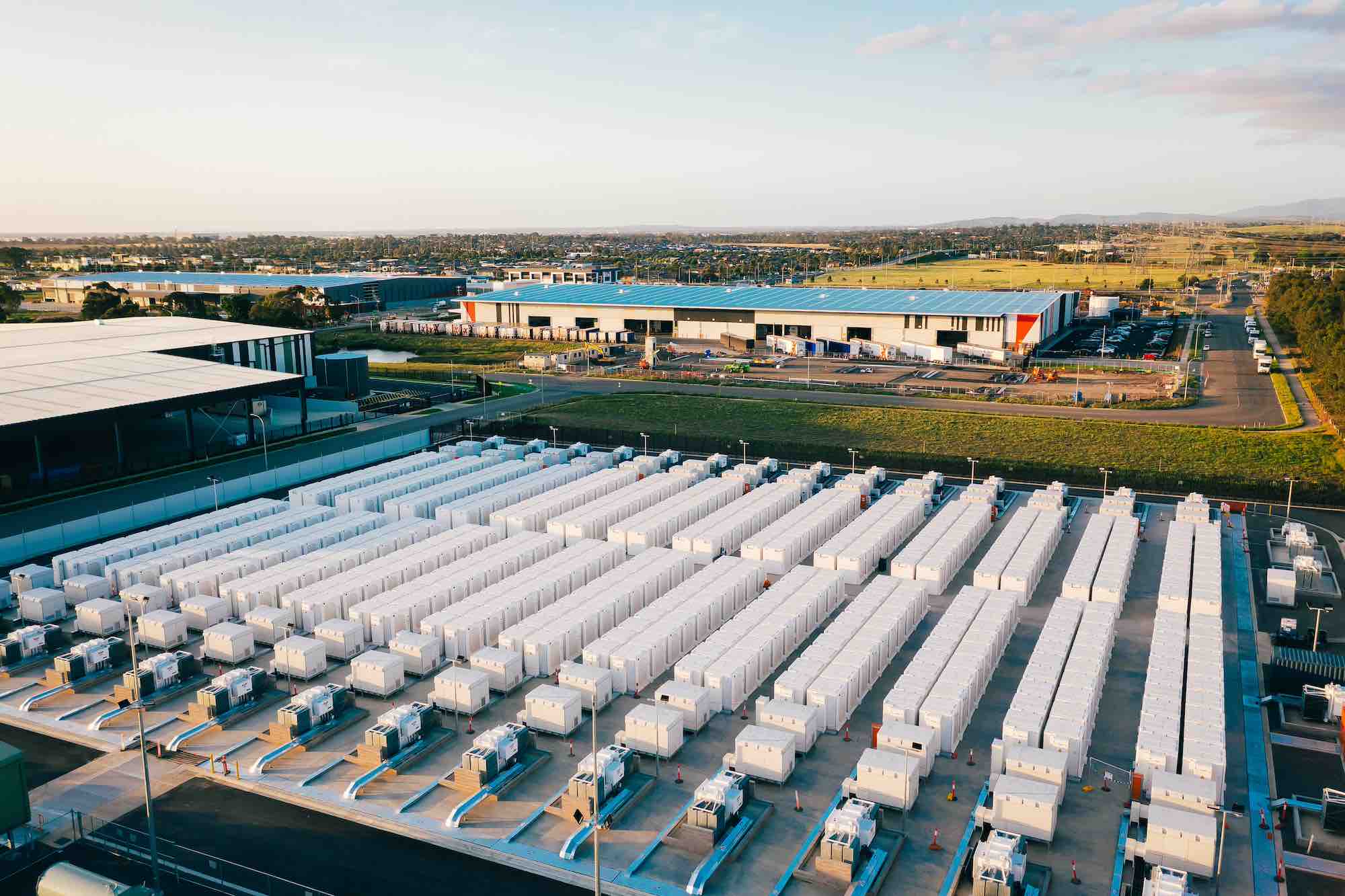Wind, solar and batteries push fossil fuels to record lows, but costly coal and hydro keep prices high

Image supplied
Giles Parkinson
May 7, 2025
Battery, Renewables, Solar, Wind
Australia’s main electricity grids have experienced another quarter of dynamic change, with a combination of record highs and lows and demand, record wind, solar and battery generation, and a sharp fall in emissions in the first quarter.
The good news, however, was moderated by the lack of any meaningful movement in wholesale electricity prices, which eased slightly on the mainland, but were pushed higher by high priced hydro generation in Tasmania, and high price bidding by coal generators in other states.
Rooftop solar and battery storage continue to be the biggest change agents in Australia’s major grids – both on the main National Electricity Market (NWM) that covers the eastern states and South Australia, and the separate W.A. grid.
According to the latest issue of the Quarterly Energy Dynamics report from the Australian Energy Market Operator, rooftop solar continues to have the most profound impact on the electricity grids, and its average output jumped 16 per cent to 3,782 megawatts in the first quarter of the year.
The effect of that was to lower overall grid demand, even though underlying demand hit new record highs across the NEM, and in Victoria and South Australia.

Source: AEMO.
Rooftop solar dominates generation in the middle of the day, and new minimum demand records were set in NSW (2,718 MW) and Victoria (1,504 MW), underlining the view of AEMO – and many of the owners of ageing coal plants – that baseload generation is passing its use by date.
See: “There is no going back:” AEMO bids goodbye to baseload grid and spins high renewable future
AEMO’s QED report notes that large scale solar boosted its year on year average output by 10 per cent to 2,386 MW, wind lifted its average by 18 per cent to 3,517 MW, while battery storage – thanks to a number of new projects – nearly doubled its average output to 98 MW, an increase of 86 per cent.
All this combined to lift the share of renewables to 43 per cent in the March quarter from 39 per cent a year earlier, push average availablity and output from both black and brown coal-fired generators to new first quarter lows, and cut average emissions intensity by 4.4 per cent to 0.59 tonnes of Co2 equivalent per tonne.
Wholesale prices continue to be higher in Queensland and NSW, with the heaviest dependence on coal, than in Victoria and South Australia. And wholesale prices tend to be higher overnight, when the share of coal generation is also higher.

Screenshot
In Tasmania, AEMO noted that the high bids from hydro generators, and the lack of grid scale solar, and limited ability to import meant that its wholesale prices were significantly higher ($55/MWh) than the mainland states, whose average price fell from $78/MWh to $76/MWh.
“Upward forces in coal and hydro prices were largely offset by downward pressures from higher renewable energy availability and fewer extreme price volatility events this quarter,” Violette Mouchaileh, the head of policy and corporate affairs at AEMO, said in a statement.
“Additionally, the frequency of negative pricing increased during the quarter, particularly in the NEM’s northern regions, which was largely attributable to grid-scale solar and wind setting prices more often.”

Source: AEMO.
But so too did the frequency of prices above $100/MWh, which occurred in 41 per cent of all intervals, driven by the increased prices demanded by coal generators, whose average price setting bid jumped from $71/MWh to $84/MWh, and hydro, whose average price setting bid soared from $85/MWh to $123/MWh.
AEMO said grid-scale solar and wind both increased their price-setting frequency, with wind increasing from 5% in Q1 2024 to 7% in 2025 and its price setting bids averaging minus $27/MWh.
Grid-scale solar set the price on 8 per cent of occasions, with the average price at minus $26/MWh. Battery storage also lowered its average price setting from $246/MWh to $215/MWh for battery generation and from $35/MWh to $26/MWh for battery load.
reneweconomy.com.au |








